搜索结果: 'ipsc'
-
 ReproRNA™-OKSGM 一种非整合型、自我复制的 RNA 重编程载体,用于生成诱导多能干细胞
ReproRNA™-OKSGM 一种非整合型、自我复制的 RNA 重编程载体,用于生成诱导多能干细胞 -
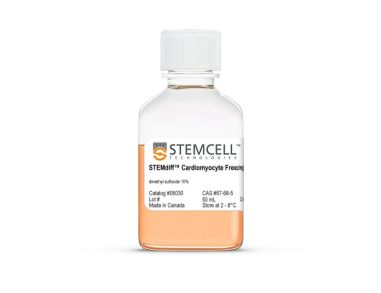 STEMdiff™心肌细胞冻存培养基 用于冻存人多能干细胞来源的心肌细胞
STEMdiff™心肌细胞冻存培养基 用于冻存人多能干细胞来源的心肌细胞 -
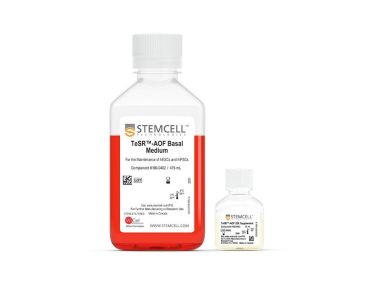 TeSR™-AOF cGMP 级、无动物源、稳定、无饲养层的人胚胎干细胞(ES)和诱导多能干细胞(iPS)维持培养基
TeSR™-AOF cGMP 级、无动物源、稳定、无饲养层的人胚胎干细胞(ES)和诱导多能干细胞(iPS)维持培养基 -
 AggreWell™ EB形成培养基 使用 AggreWell™ 培养板进行拟胚体生成和培养的无血清培养基
AggreWell™ EB形成培养基 使用 AggreWell™ 培养板进行拟胚体生成和培养的无血清培养基 -
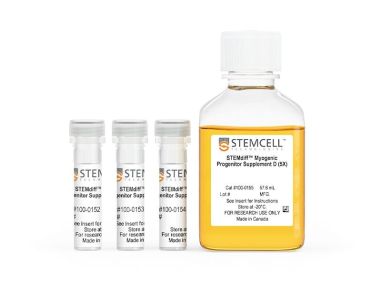 STEMdiff™ 肌源祖细胞补充试剂盒 用于将人多能干细胞(hPSCs)分化为肌源祖细胞的无血清补充剂
STEMdiff™ 肌源祖细胞补充试剂盒 用于将人多能干细胞(hPSCs)分化为肌源祖细胞的无血清补充剂 -
 TeSR™-E7™重编程培养基(2组分) 无饲养层且不含动物成分的重编程培养基,用于人诱导性多能干细胞(iPS细胞)的诱导。
TeSR™-E7™重编程培养基(2组分) 无饲养层且不含动物成分的重编程培养基,用于人诱导性多能干细胞(iPS细胞)的诱导。 -
 CellAdhere™ 稀释缓冲液 基质蛋白稀释缓冲液,例如 Vitronectin XF™
CellAdhere™ 稀释缓冲液 基质蛋白稀释缓冲液,例如 Vitronectin XF™ -
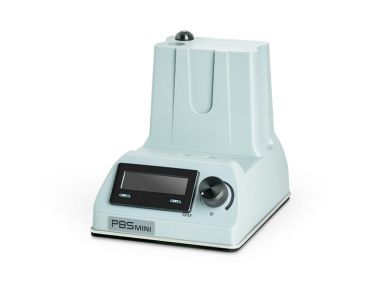 PBS-MINI MagDrive生物反应器 紧凑型生物反应器,配备一次性容器,用于hPSC和其他细胞类型的高通量3D悬浮培养
PBS-MINI MagDrive生物反应器 紧凑型生物反应器,配备一次性容器,用于hPSC和其他细胞类型的高通量3D悬浮培养 -
 ReproTeSR™ 重编程培养基(双组分) 用于人iPS细胞诱导的重编程培养基
ReproTeSR™ 重编程培养基(双组分) 用于人iPS细胞诱导的重编程培养基 -
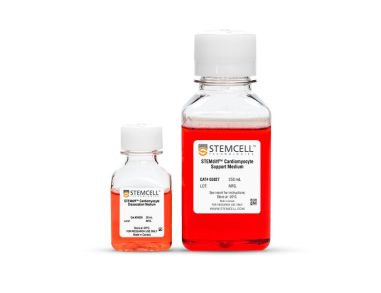 STEMdiff™心肌细胞分离试剂盒 用于解离hPSC衍生的心肌细胞
STEMdiff™心肌细胞分离试剂盒 用于解离hPSC衍生的心肌细胞 -
 STEMdiff™ 心肌细胞扩增试剂盒 用于扩增早期人PSC衍生心肌细胞的无血清试剂盒
STEMdiff™ 心肌细胞扩增试剂盒 用于扩增早期人PSC衍生心肌细胞的无血清试剂盒 -
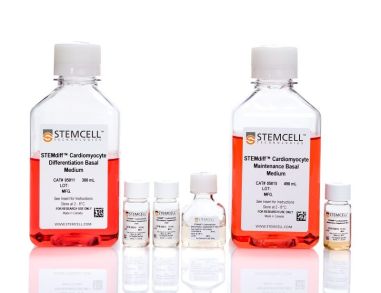 STEMdiff™心室心肌细胞分化试剂盒 用于将人 PSC 分化为心室肌细胞以及长期维持人PSC衍生心肌细胞的无血清培养基
STEMdiff™心室心肌细胞分化试剂盒 用于将人 PSC 分化为心室肌细胞以及长期维持人PSC衍生心肌细胞的无血清培养基


 EasySep™小鼠TIL(CD45)正选试剂盒
EasySep™小鼠TIL(CD45)正选试剂盒





 沪公网安备31010102008431号
沪公网安备31010102008431号